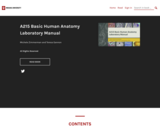
This is a lab manual for Basic Human Anatomy.
- Subject:
- Anatomy/Physiology
- Life Science
- Material Type:
- Activity/Lab
- Provider:
- Indiana University
- Author:
- Michele Zimmerman
- Teresa Gannon
- Date Added:
- 10/19/2020

This is a lab manual for Basic Human Anatomy.

This short video covers many anatomical terms.

Anatomy and Physiology is a dynamic textbook for the two-semester human anatomy and physiology course for life science and allied health majors. The book is organized by body system and covers standard scope and sequence requirements. Its lucid text, strategically constructed art, career features, and links to external learning tools address the critical teaching and learning challenges in the course. The web-based version of Anatomy and Physiology also features links to surgical videos, histology, and interactive diagrams.
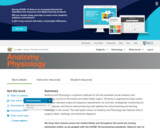
Anatomy and Physiology is a dynamic textbook for the two-semester human anatomy and physiology course for life science and allied health majors. The book is organized by body system and covers standard scope and sequence requirements. Its lucid text, strategically constructed art, career features, and links to external learning tools address the critical teaching and learning challenges in the course. The web-based version of Anatomy and Physiology also features links to surgical videos, histology, and interactive diagrams.
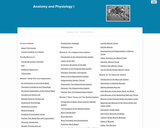
Includes the study of the gross and microscopic structure of the systems of the human body with special emphasis on the relationship between structure and function. Integrates anatomy and physiology of cells, tissues, organs, the systems of the human body, and mechanisms responsible for homeostasis.

Includes sections on the Endocrine System, the Cardiovascular System, the Lymphatic and Immune System, the Respiratory System, the Digestive System, Nutrition, the Urinary System, the Reproductive System, and Development and Inheritance.
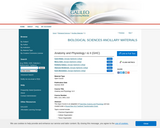
This Open Course is an adaptation of OpenStax Anatomy and Physiology and was created under a Round Nine ALG Textbook Transformation Grant.
Topics covered include:
Chemical Organization
Cellular Organization
Tissue Organization
Integumentary System
Skeletal System
Muscular System
Nervous System
Endocrine System
Cardiovascular System
Lymphatic System
Respiratory System
Digestive System
Reproductive System
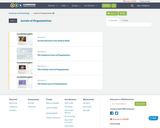
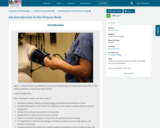

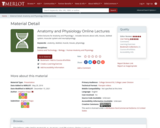
Online lectures for Anatomy and Physiology I. Includes lectures about cells, tissues, skeletal system, muscular system and neurophysiology.
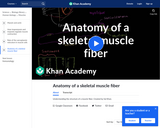
This 17-minute video lesson looks at understanding the structure of a muscle cell. [Biology playlist: Lesson 50 of 71].
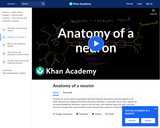
This 6-minute video lesson provides an introduction to the neuron and its anatomy. [Biology playlist: Lesson 41 of 71].
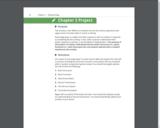
Test anxiety is real. Millions of students all over the country experience this vague sense of unease when it comes to testing. Psychology gives us insight into what is going on with our bodies in response to something like test anxiety. In fact, when a person understands their body’s response to anxiety, it can be helpful in dealing with it. The purpose of this project is to better understand how the body’s structures (i.e., parts), functions (i.e., what those parts do), and systems operate when a student experiences test anxiety.
Abbreviated Directions: On a piece of very large paper or poster board, label and explain the role and/or process of biological structures, functions, and systems that are activated when a student is experiencing test anxiety.
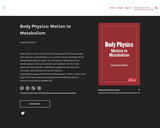
Body Physics was designed to meet the objectives of a one-term high school or freshman level course in physical science, typically designed to provide non-science majors and undeclared students with exposure to the most basic principles in physics while fulfilling a science-with-lab core requirement. The content level is aimed at students taking their first college science course, whether or not they are planning to major in science. However, with minor supplementation by other resources, such as OpenStax College Physics, this textbook could easily be used as the primary resource in 200-level introductory courses. Chapters that may be more appropriate for physics courses than for general science courses are noted with an asterisk symbol (*). Of course, this textbook could be used to supplement other primary resources in any physics course covering mechanics and thermodynamics.
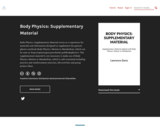
Body Physics: Supplementary Material serves as a repository for materials and information designed to supplement the general physics textbook Body Physics: Motion to Metabolism, which can be seen at: https://openoregon.pressbooks.pub/bodyphysics/. The supplementary material is not necessary to make use of Body Physics: Motion to Metabolism, which is self-contained including practice and reinforcement exercises, lab activities and group project ideas.
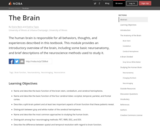
The human brain is responsible for all behaviors, thoughts, and experiences described in this textbook. This module provides an introductory overview of the brain, including some basic neuroanatomy, and brief descriptions of the neuroscience methods used to study it.
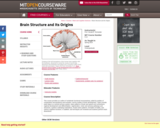
This course provides an outline of vertebrate functional neuroanatomy, aided by studies of comparative neuroanatomy and evolution, and by studies of brain development. Topics include early steps to a central nervous system, basic patterns of brain and spinal cord connections, regional development and differentiation, regeneration, motor and sensory pathways and structures, systems underlying motivations, innate action patterns, formation of habits, and various cognitive functions. In addition, lab techniques are reviewed and students perform brain dissections.
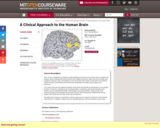
This course is designed to provide an understanding of how the human brain works in health and disease, and is intended for both the Brain and Cognitive Science major and the non-Brain and Cognitive Science major. Knowledge of how the human brain works is important for all citizens, and the lessons to be learned have enormous implications for public policy makers and educators. The course will cover the regional anatomy of the brain and provide an introduction to the cellular function of neurons, synapses and neurotransmitters. Commonly used drugs that alter brain function can be understood through a knowledge of neurotransmitters. Along similar lines, common diseases that illustrate normal brain function will be discussed. Experimental animal studies that reveal how the brain works will be reviewed. Throughout the seminar we will discuss clinical cases from Dr. Byrne's experience that illustrate brain function; in addition, articles from the scientific literature will be discussed at each class.

This book teaches healthcare professionals the basics of EKG interpretation and is available as a Creative Commons resource.